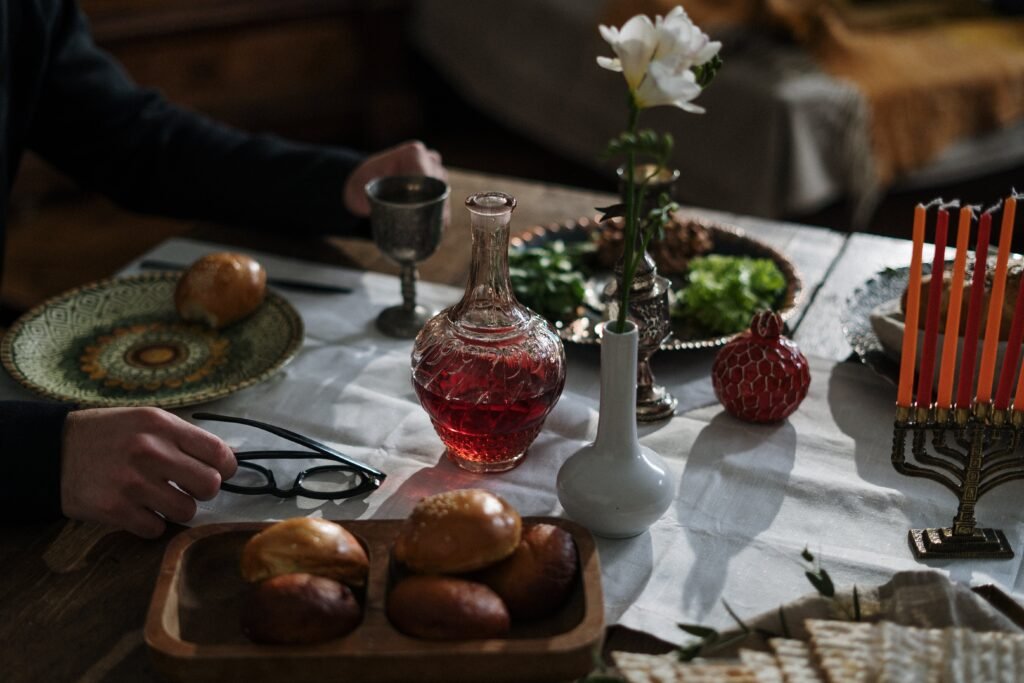Have you ever found yourself struggling to navigate through a cluttered kitchen, desperately searching for that one essential utensil or ingredient? Organizing your kitchen for optimal functionality can make all the difference in creating a space that is both efficient and enjoyable to use. From decluttering and categorizing to maximizing storage solutions, this article will provide you with practical tips and tricks to help you transform your kitchen into a well-organized oasis of culinary productivity. Say goodbye to the frustration of misplaced items and hello to a kitchen that works seamlessly for you. Let’s dive in and discover how to organize your kitchen for optimal functionality!
Storage Solutions
Decluttering and purging
One of the first steps in organizing your kitchen is to declutter and purge unnecessary items. Take a look at your kitchen supplies and get rid of anything that is broken, unused, or expired. This will help free up valuable space and make it easier to organize the items you actually use and need.
Investing in storage containers
Investing in quality storage containers can make a big difference in keeping your kitchen organized. Opt for containers that are stackable and have tight lids to keep food fresh and prevent spills. Clear containers are also a great option as they allow you to easily see what’s inside without having to open each one.
Maximizing cabinet space
Cabinets are often one of the primary storage areas in the kitchen, so it’s important to maximize their space. Use stackable shelves or risers to double the storage capacity of your cabinets. Hanging hooks inside the cabinets can also be useful for storing mugs or utensils. Additionally, consider attaching door-mounted organizers to make use of the interior space of your cabinets.
Using vertical storage solutions
Utilizing vertical storage solutions can help maximize space in your kitchen. Install shelving units or hanging racks on walls to store pots, pans, and other cookware. Magnetic knife strips are a great way to keep your knives easily accessible and free up counter space. You can also utilize the space above your cabinets by placing decorative baskets or bins to store less frequently used items.
Kitchen Layout
Analyzing workflow
When organizing your kitchen, it’s important to analyze the workflow to create an efficient and functional layout. Consider the natural flow of movement in your kitchen and arrange your cabinets, appliances, and workstations accordingly. By placing items where they are most frequently used, you can streamline your cooking and cleaning processes.
Creating different zones
Divide your kitchen into different zones based on their functions. For example, create a food preparation zone near the sink and cutting boards, a cooking and baking zone near the stove and oven, and a cleaning zone near the dishwasher and sink. This will help you stay organized and save time when preparing meals.
Designing a functional work triangle
The concept of the work triangle involves arranging your refrigerator, stove, and sink in a triangular layout to optimize efficiency. Ideally, the distance between each point of the triangle should be between 4 and 9 feet. By designing a functional work triangle, you can minimize the amount of steps needed to move between key kitchen areas, making meal preparation more efficient.

Pantry Organization
Categorizing food items
To keep your pantry organized, categorize food items into groups such as grains, canned goods, snacks, and baking supplies. This will make it easier to locate items when you need them. Consider using clear storage containers or bins to group similar items together and keep them neatly organized.
Labeling shelves and containers
Another useful tip for pantry organization is to label your shelves and containers. Use a labeling system that works for you, such as sticky notes, chalkboard labels, or a label maker. This will help everyone in your household find and return items to their designated places, reducing clutter and confusion.
Utilizing door and wall space
Make use of the door and wall space in your pantry by installing over-the-door organizers or hanging baskets. These can be used to store small items like spices, snacks, or condiments. You can also hang hooks or racks on the walls to hang aprons, oven mitts, or kitchen utensils. By utilizing these often overlooked spaces, you can maximize your pantry storage capacity.
Drawer Organization
Sorting and grouping utensils
When organizing your kitchen drawers, start by sorting and grouping utensils together. Separate your utensils into categories such as cooking utensils, serving utensils, and baking tools. This will make it easier to locate specific items when you need them and prevent your drawers from becoming cluttered.
Using dividers or trays
Dividers or trays are an essential tool for keeping your kitchen drawers organized. They can help create separate compartments for different utensils, preventing them from sliding around and becoming tangled. Consider using adjustable dividers or customizable trays that can be rearranged to fit your specific needs.
Arranging items based on frequency of use
Arrange your kitchen utensils in your drawers based on their frequency of use. Place frequently used utensils in easily accessible locations and store less commonly used ones in the back or deeper compartments. This will save you time and make it easier to find the utensils you use most often.

Countertop Management
Clearing clutter
One of the keys to an organized kitchen is to minimize countertop clutter. Start by clearing off any items that don’t belong on the countertop, such as mail, keys, or random kitchen gadgets. Keep your countertops clean and free of unnecessary items to create a more spacious and functional workspace.
Establishing dedicated work zones
Create dedicated work zones on your countertop for different tasks, such as meal preparation, cooking, and baking. Designate specific areas for cutting, mixing, and assembling ingredients. By establishing these zones, you can maintain order and efficiency in your kitchen.
Minimizing countertop appliances
While countertop appliances are convenient, they can quickly take up valuable space. Assess which appliances you use most frequently and consider storing less commonly used ones in cabinets or pantries. This will free up more workspace on your countertops and make your kitchen appear more organized.
Optimizing Cabinet Space
Arranging pots and pans
When organizing your cabinets, arrange your pots and pans in a way that maximizes space and accessibility. Consider using stackable pot and pan organizers or adjustable dividers to create separate compartments. This will make it easier to grab the desired cookware without having to dig through a jumble of pots and pans.
Utilizing vertical dividers
Maximize your cabinet space by utilizing vertical dividers. These can be installed in cabinets to create separate compartments for baking sheets, cutting boards, and trays. Vertical dividers keep items upright and organized, making them easier to grab and preventing a cluttered mess.
Installing pull-out shelves
Installing pull-out shelves in your cabinets can greatly enhance their functionality. This allows you to easily access items stored in the back of the cabinet without having to rummage through everything in front. Pull-out shelves also make it simple to organize and retrieve items, maximizing the use of your cabinet space.

Small Appliance Storage
Storing appliances based on frequency of use
To effectively store small appliances, consider organizing them based on their frequency of use. Keep frequently used appliances, such as your coffee maker or toaster, easily accessible on the countertop or in a cabinet. Less frequently used appliances can be stored in a pantry or a designated appliance storage area.
Making use of empty cabinet space
If you have empty cabinet space in your kitchen, take advantage of it by storing small appliances inside. This will help free up countertop space and keep your kitchen looking tidy. Utilize clear storage containers or bins to group similar appliances together and easily locate them when needed.
Using appliance garages
Appliance garages are a great solution for keeping small appliances out of sight yet easily accessible. These are cabinets with doors that open vertically or horizontally to reveal a designated storage area for appliances. Appliance garages can be installed on countertops or built into cabinets to neatly conceal appliances while still keeping them easily accessible.
Optimal Dishware Placement
Organizing dishware by frequency of use
When organizing your dishware, arrange it based on frequency of use. Keep everyday dishes, glasses, and silverware within easy reach, either in a cabinet close to your dishwasher or on open shelving. Reserve higher or harder-to-reach shelves for specialty or occasional-use dishware.
Keeping everyday essentials within reach
To ensure efficiency in your kitchen, keep everyday essentials like plates, bowls, and glasses within easy reach. This will save you time and effort when setting the table or serving meals. Consider using open shelving or lower cabinets for these items to make them easily accessible.
Stacking efficiently
When stacking your dishes, stack them efficiently to maximize cabinet space and prevent them from toppling over. Place larger plates at the bottom and smaller ones on top. Consider using non-slip shelf liners or plate dividers to keep your dishes neatly organized and prevent scratches.
Knife and Cutting Board Organization
Using knife blocks or magnetic strips
Knife blocks or magnetic strips are excellent options for organizing and storing your knives. Knife blocks keep your knives securely in place and protect their blades. Magnetic strips, on the other hand, allow you to safely store your knives while keeping them easily accessible and visible.
Storing cutting boards upright
To save space and keep your cutting boards organized, store them upright in a holder or vertically against the cabinet wall. This prevents them from taking up unnecessary space and makes it easier to grab the board you need without having to sift through a stack of boards.
Creating a designated cutting area
Designate a specific area in your kitchen for cutting and food preparation. This can be a countertop space near the sink or a designated cutting board area. By creating a designated cutting area, you can keep all your cutting tools and supplies in one place, making meal preparation more efficient.
Spice Cabinet Organization
Arranging spices alphabetically
One of the most effective ways to organize your spice cabinet is to arrange your spices alphabetically. This makes it easier to locate specific spices when you need them and keeps your cabinet neat and organized. Consider using small spice racks or tiered shelves to maximize space and visibility.
Using spice racks or tiered shelves
Spice racks or tiered shelves are essential tools for organizing your spice cabinet. These allow you to store your spices in a compact and visually pleasing way, making them easily accessible. Place frequently used spices at eye level or within easy reach for convenience.
Utilizing labels and clear containers
To further enhance spice cabinet organization, use labels and clear containers for your spices. Label each container with the spice name and stick it onto the container or shelf for easy identification. Clear containers, such as glass jars or plastic containers, allow you to see the spices at a glance, preventing the need to search through every container.
